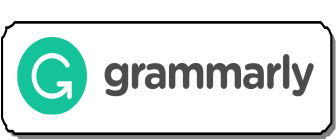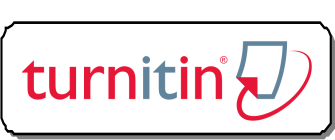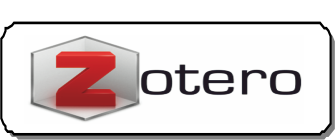Perkembangan Pesantren di Indonesia (Era Orde Lama, Orde Baru, Reformasi)
Abstract
Boarding school as the oldest educational institutions in Indonesia have a significant contribution to the Muslims in Indonesia , even up to the nation . Since the beginning of the coming of Islam to the era reform schools still exist and can keep abreast advances in science and technology , so that the boarding school be a great hope for this nation to relaese candidat the best to participate in the development and progress of the nation in various erasReferences
Ali, Mukti. (1993), Memahami Beberapa Aspek Ajaran Islam. Bandung: Mizan.
Aly, Machrs. (t.t), “Hakekat Cita Pondok Pesantren,” dalam Soeparlan Soeryopratondo dan M. Syarif, Kapita Selekta Pondok Pesantren. Jakarta: PT. Paryu Barkah.
Bawani, Imam. (1993),Tradisionalisme dalam Pendidikan Islam. Surabaya: Al-ikhlas.
Daulay, Haidar Putra. (2007), Sejarah Pertumbuhan dan Pembaruan Pendidikan Islam di Indonesia Jakarta: Kencana.
Fuad, A. Zakki. (2011), Sejarah Pendidikan Islam. Surabaya: IAIN Sunan Ampel.
Himpunan Peraturan Perundang-Undangan dalam “Peraturan Pemerintah Republik Indonesia No. 55 tahun 2007 tentang Pendidikan Agama dan Pendidikan Keagamaan (Bandung: Fokusmedia, 2010).
Nasir, Muhammad Ridlwan. (2005), Mencari Tipologi Format Pendidikan Ideal: Pondok Pesantren di Tengah Arus Perubahan. Yogyakarta: Pustaka Pelajar.
Nizar, Samsul. (2009), Sejarah Pendidikan Islam; Menelusuri Jejak Sejarah Pendidikan era Rasulullah sampai Indonesia. Jakarta: Kencana.
Qamar, Mujammil. (2005), Pondok Pesantren dari Transformasi Metodologi Menuju Demokratisasi Institusi. Jakarta: Erlangga.
Raharjo, Dawam. (1983), Dunia Pondok Pesantren dalam Peta Pembaharuan. Jakarta: LP3ES.
Republik Indonesia, Undang-Undang RI No. 20 Tahun 2003 tentang Sistem Pendidikan Nasional Bandung: Fokusmedia, 2010.
Said, Muhammad dan Junimar Affan. (1987), Mendidik dari Zaman ke Zaman. Bandung: Jemmars.
Shaleh, Abdurrahman. (1984), Penyelenggaraan Madrasah, Peraturan Perundangan. Jakarta: Dharma Bakti.
Saksono, Wiji. (1995), MengIslamkan Tanah Jawa; Telaah Atas Metode Dakwah Wali Songo. Bandung: Mizan.
Sarijo, Marwan. (1980), Sejarah Pondok Pesantren di Indonesia. Jakarta: Dharma Bhakti.
Sumardi, Mulyanto. (1997), Sejarah Singkat Pendidikan Islam di Indonesia 1945-1975. Jakarta: Dharma Bhakti.
Teba, Sudirman. (1985), Dilema Pesantren: Belenggu Politik dan Pembaharuan Sosial. Jakarta: P3M.
Undang-Undang Republik Indonesia Nomor 20 Tahun 2003 tentang Sistem Pendidikan Nasional Cet. I; Jakarta: Sinar Grafika, 2003.
Undang-Undang Republik Indonesia Nomor 20 Tahun 2003, tentang Sistem Pendidikan Nasional dan Peraturan Pemerintah R.I. Nomor 47 Tahun 2008 Cet. II; Bandung: Citra Umbara, 2009.
Prasodjo, Sudjoko et al. (2001), “Profil Pondok Pesantren,” dalam Abuddin Nata (ed), Sejarah Pertumbuhan dan Perkembangan Lembaga-Lembaga Pendidikan Islam di Indonesia. Jakarta: Grasindo.
Yunus, Mahmud. (1985), Sejarah Pendidikan Islam di Indonesia. Jakarta: Hidakarya Agung
Please find the rights and licenses in SYAMIL Jurnal Pendidikan Agama Islam (Journal of Islamic Education). By submitting the article/manuscript of the article, the author(s) agree with this policy. No specific document sign-off is required.
1. License
The non-commercial use of the article will be governed by the Creative Commons Attribution license as currently displayed on Creative Commons Attribution-ShareAlike 4.0 International License.
2. Author(s)' Warranties
The author warrants that the article is original, written by stated author(s), has not been published before, contains no unlawful statements, does not infringe the rights of others, is subject to copyright that is vested exclusively in the author and free of any third party rights, and that any necessary written permissions to quote from other sources have been obtained by the author(s).
3. User/Public Rights
SYAMIL spirit is to disseminate articles published are as free as possible. Under the Creative Commons license, SYAMIL permits users to copy, distribute, display, and perform the work for non-commercial purposes only. Users will also need to attribute authors and Register on distributing works in the journal and other media of publications. Unless otherwise stated, the authors are public entities as soon as their articles got published.
4. Rights of Authors
Authors retain all their rights to the published works, such as (but not limited to) the following rights;
Copyright and other proprietary rights relating to the article, such as patent rights,
The right to use the substance of the article in own future works, including lectures and books,
The right to reproduce the article for own purposes,
The right to self-archive the article (please read out deposit policy),
The right to enter into separate, additional contractual arrangements for the non-exclusive distribution of the article's published version (e.g., post it to an institutional repository or publish it in a book), with an acknowledgment of its initial publication in this journal (SYAMIL Jurnal Pendidikan Agama Islam (Journal of Islamic Education)).
5. Co-Authorship
If the article was jointly prepared by more than one author, any authors submitting the manuscript warrants that he/she has been authorized by all co-authors to be agreed on this copyright and license notice (agreement) on their behalf, and agrees to inform his/her co-authors of the terms of this policy. SYAMIL will not be held liable for anything that may arise due to the author(s) internal dispute. SYAMIL will only communicate with the corresponding author.
6. Royalties
Being an open accessed journal and disseminating articles for free under the Creative Commons license term mentioned, author(s) aware that SYAMIL entitles the author(s) to no royalties or other fees.
7. Miscellaneous
SYAMIL will publish the article (or have it published) in the journal if the article’s editorial process is successfully completed. SYAMIL editors may modify the article to a style of punctuation, spelling, capitalization, referencing and usage that deems appropriate. The author acknowledges that the article may be published so that it will be publicly accessible and such access will be free of charge for the readers as mentioned in point 3.











